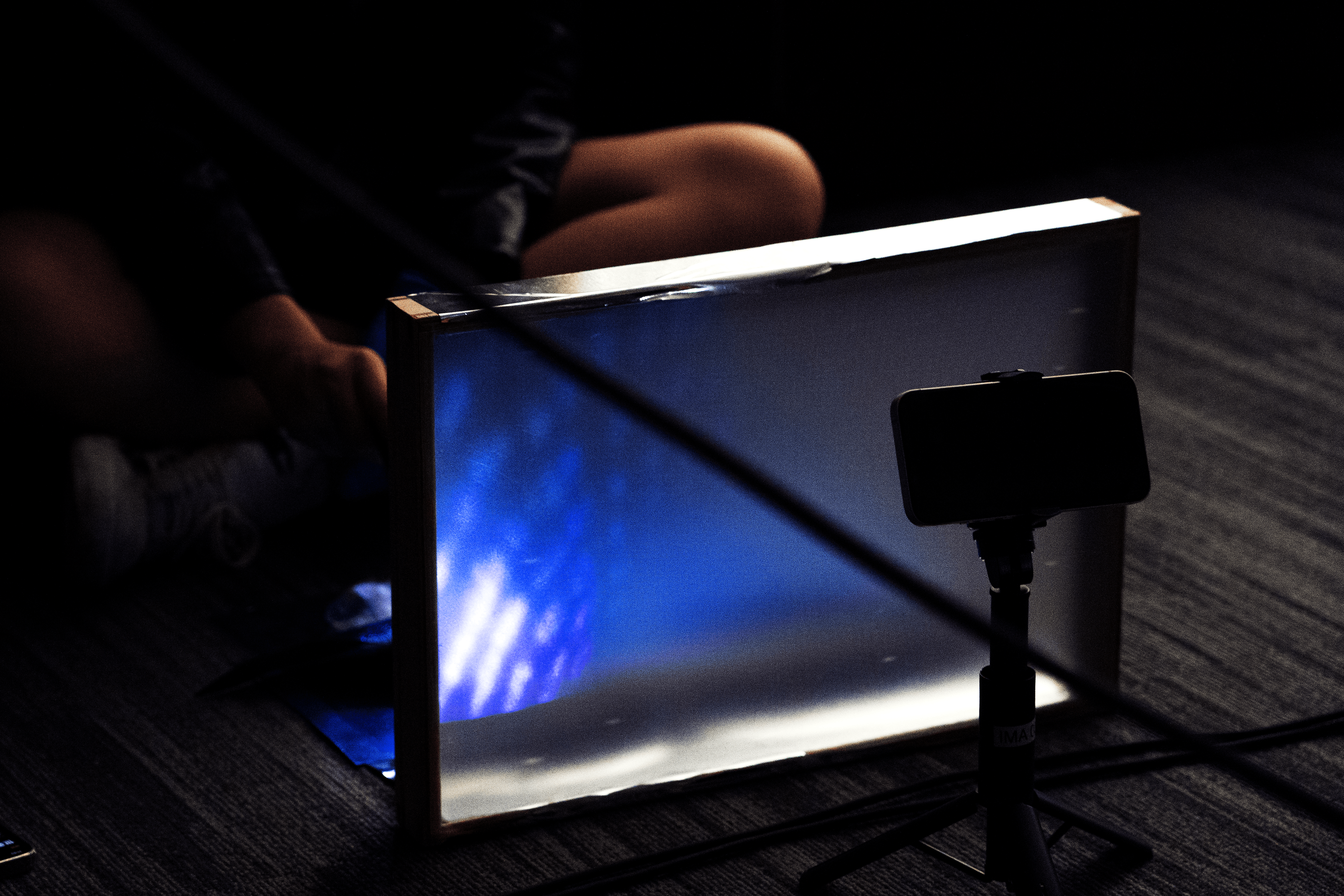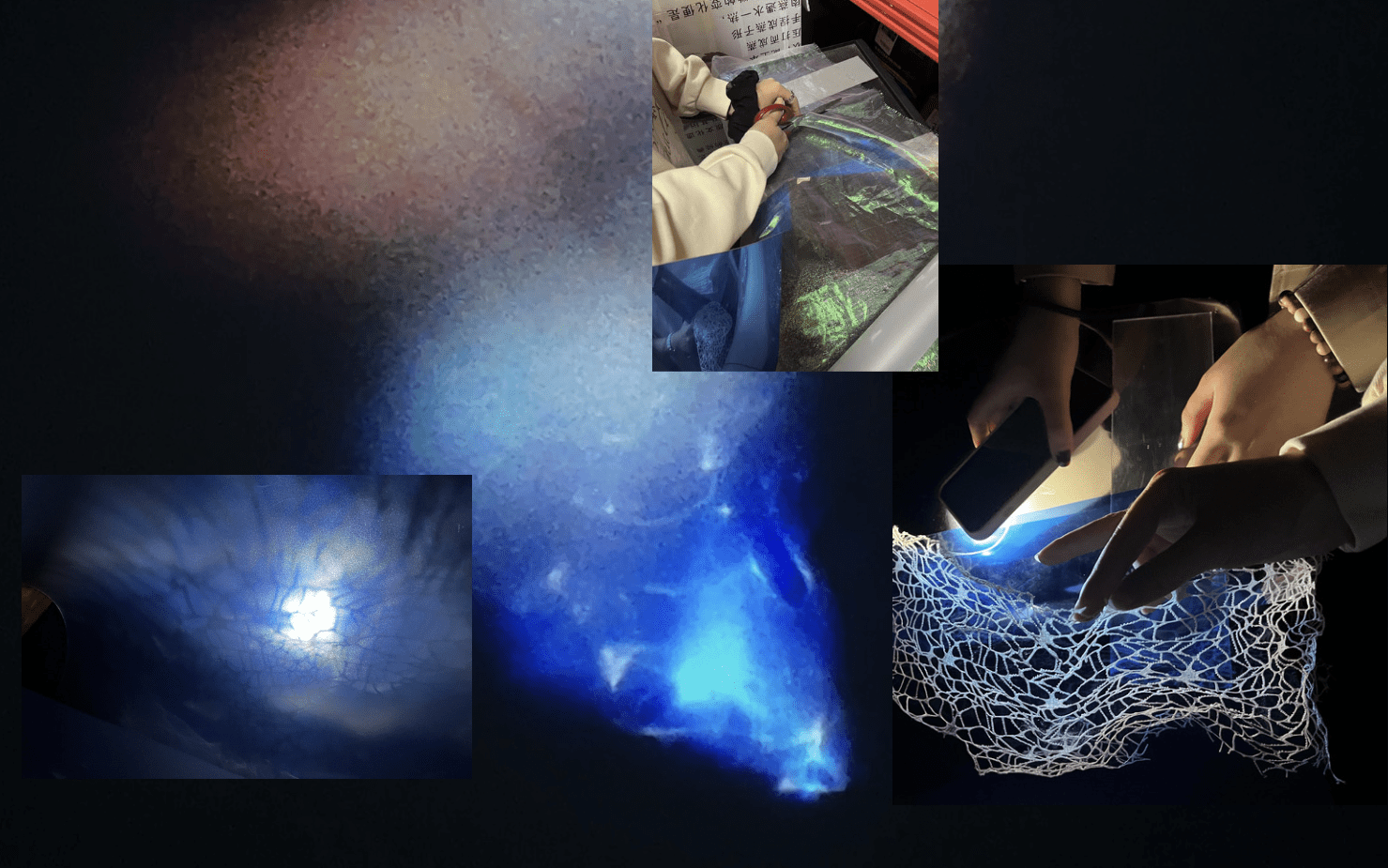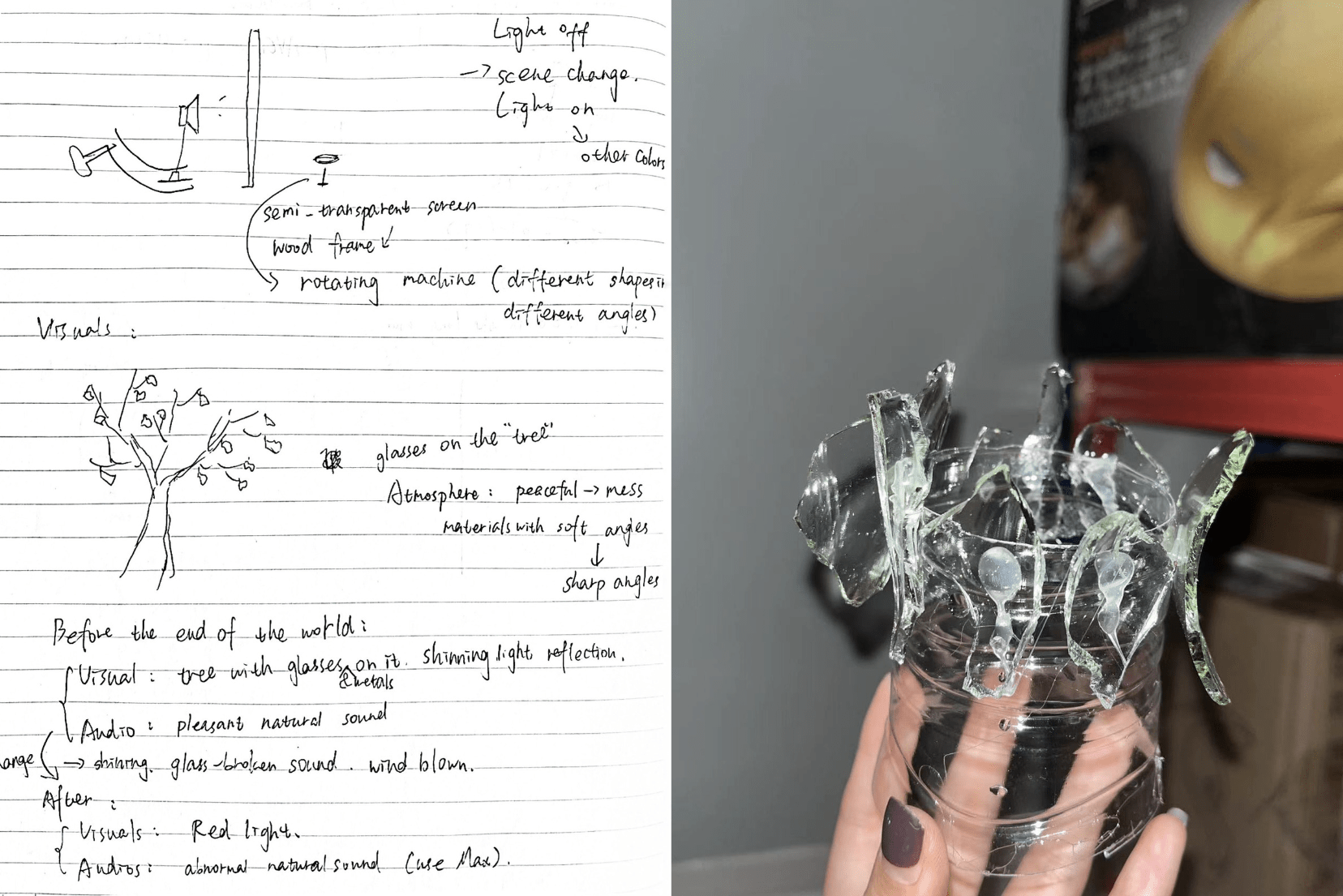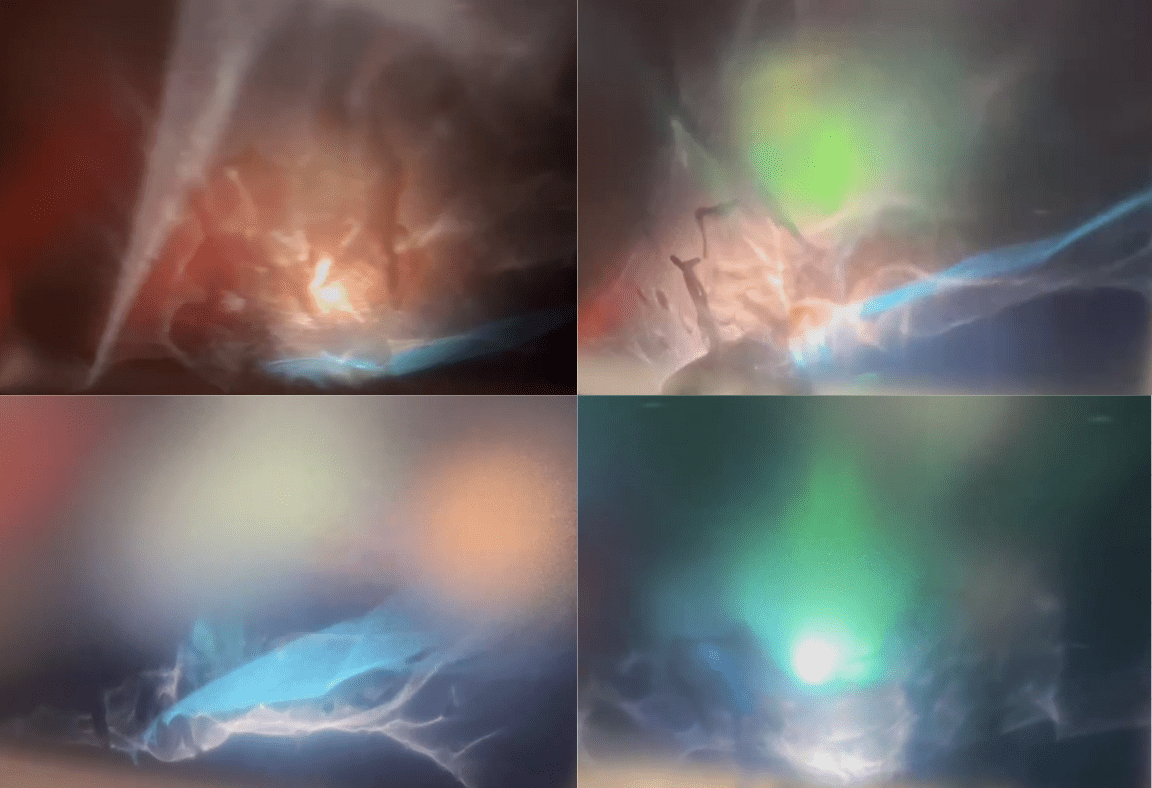Project Title: Atlantia by Sophia Wan, Chanel Feng, Joy Yang, and Maggie Wang
Project Description:
In this project, we created a real-time audio-visual Lumia performance as a group of four. Our Lumia performance used light as the main tool to create effects, accompanied by music. We explored the refraction effect of lights with laser papers, semi-transparent PVC paper, and cellophane. With a semi-transparent screen in front of the paper materials, different colors and wrinkles of these materials are refracted on the screen. During the performance, we modified the visuals by changing different types of paper and cloth and the position of the flashlight. Besides, we modified the visuals and audio files on Max in the live performance.
Atlantia tells the story of an imaginary civilization. In our narration, the civilization experienced three stages:
1. Born from nothingness.
2. Gradually develop and become prosperous.
3. Devastation and elimination, back to peace and nothingness.
The circulation of history always interests me a lot. As a group, we came up with the idea of this project Atlantia with inspiration from the old lost civilization – Atlantics. Some people say this civilization is imaginary, however, we are deeply attracted by the mystery of this early civilization and intend to create a beautiful performance to show the imaginations in our minds related to the mysterious civilization.
Perspective and Context
Our choice of materials aligns with the historical Lumia artists. The Light-projection device constructed by the French Jesuit philosopher and mathematicians Louis-Bertr and Castel combined “candles, mirrors, and colored papers to produce light reflections whose seven spectral hues correlated to the seven tones of the musical scale” (Orgeman 23). We chose colored papers and made a special bottle attached to glass fragments to create light reflections. The color and shapes refracted on our semi-transparent screen changed as the light and materials were manually changed by us. The smooth movement of the colorful lights and patterns in our performance is the extension of the form and meaning of Thomas Wilfred’s performance. “For Wilfred, light formed the cornerstone of human existence” (Orgeman 29). For us, in our imagination, light is symbolic in both the birth and the elimination of a civilization.
Development & Technical Implementation
We experimented with different kinds of papers and textiles. Some of the materials are not very good in refraction, for example, white organza and dark blue grenadine, even though they may look beautiful. As a result, we found that laser paper, especially those with obvious colors, can make better effects on our screen made of semi-transparent PVC paper. Since our concept is a lost civilization or state in the deep ocean, we used blue as the theme color. We made a special bottle that was cut from part of the mineral water bottle and attached with several glass fragments by hot glue. Its shadow on the screen looks like a castle, symbolizing the birth and prosperity of the civilization in the deep ocean.
We used several colorful paper and textiles to interact with lights, and a screen made of PVC paper. Each of our group members works on a certain part during the performance. My job is to change the materials at several time spots. Joy is controlling the light and we cooperate to conduct the live performance. Chanel and Maggie are responsible for controlling the visual and audio effects in Max respectively.
Performance
Before our performance, we rehearsed several times. The visual effects do not usually consist of the previous rehearsals because the performance is live and it’s hard to tell the precise angle of light and placement of materials when we accidentally create beautiful patterns on the screen. Another problem happened exactly during our performance. To improve the resolution of the video, we changed the webcam to our phone and connected our phone to the laptop. However, during our first performance, the phone was disconnected from the laptop 3 minutes after the performance began. In the second performance, we changed the time for screen lock time of the laptop to 10 minutes, effectively avoiding this problem. But in the last minute of the second performance, some of the functions in Max lost control, making the screen much brighter than planned.
Below is the video of our live performance.
Team Work
In the beginning, we divided group members into two pairs, two of us focused on making visual effects and two of us focused on making audio files. However, nearly all of us were involved in making the visuals, probably because the work of making the visual effects requires more time than making audio. Next time we need to divide the tasks more efficiently and reasonably based on the workload and consider making a time plan. We had a lot of discussions, experiments, and rehearsals together, but not all the time used in our meetings was effective. We could have been more focused and efficient. It’s good that in teamwork, we exchange ideas and collaborate together. There was seemingly less workload compared with individual projects. However, the division and assignment of tasks are sometimes ambiguous, lowering our efficiency.
Conclusion
This Lumia Performance gives me a chance to experience how people can perform live by using the feasible materials around our lives. It was a nice experience to come up with an idea and then put it into practice with teammates. However, live performances might need more rehearsals and preparations than recorded ones, since there may be some unexpected problems happening during the performances. I hope that in the future, we can make visual patterns and audio effects that resonate more precisely with our ideas and leave enough space for the audience to imagine.
Work Cited
Orgeman, Keely, et al. Lumia: Thomas Wilfred and the Art of Light. Yale University Art Gallery, New Haven, Ct, 2017, pp. 19-48.





Leave a Reply